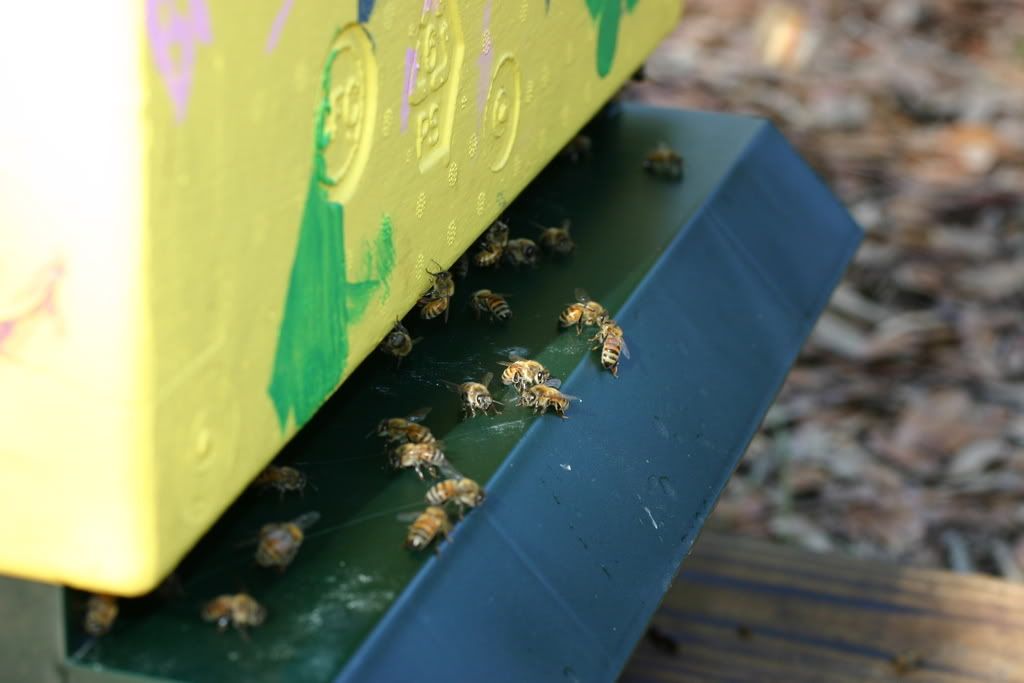Labor Day is sort of an ironic holiday if you are a bee working yourself to death. Still, to celebrate it, I figured I would give the hive a break and not inspect it this weekend. For my next inspection (week from today) my goals are to first, not wear my beekeeper gloves again (this time for the duration of the whole inspection); they are hot and hard to pick anything up with. I’m also hoping to have my new frame grippers in by then. The grippers should make the job of getting frames out of the hive, and holding them steady for the camera, much easier. Finally, my last goal is to pull and photograph every single frame in the hive. Nevertheless, not inspecting the hive shouldn’t keep me from observing it for normal behavior and my own educational purposes. Seven days ago I observed a frame about 80% full of new eggs, with a couple of groupings of hatched eggs. Knowing that and the fact that: Worker bees hatch after 3½ days, cap 9 days +-1, and emerge 20 days +-1 (Bush farm bee math), then on my next inspection I should be looking at a mostly capped, ready to emerge frame with most of the brood between 14 to 18 days old. Looking at the colony from the outside I’m deducting that things are good. There seems to be a good nectar/pollen flow going on currently where I live, and the bees are busy as bees (Go Figure). Notice in the following pictures not just the bees coming back with a full load, but the bees tracking in pollen on the landing board. Is also very obvious where they are taking it if you follow those dirty little feet. Right in the middle of the brood, where the frame I pulled out with eggs is located. The other path leads into frame 1. Since the bees have chosen to concentrate their labor on that outside frame, I figure is only appropriate this should be frame 1 from now on.

 How do bees end a hard days work ?? By cleaning the landing board and each other. I think I see very good grooming characteristics. Good grooming = no Mites
How do bees end a hard days work ?? By cleaning the landing board and each other. I think I see very good grooming characteristics. Good grooming = no Mites
I'm sure there is a good technical term for it, but I call it mopping the landing board. Notice all the bees mopping away, the more they bring in during the day the more there is to clean in the afternoon. Notice the bees cleanign the landing board and the body of the hive. Sandwich in between the guards and the fannign bees regulating the temperature inside. On the left you can see the eqivalent of a bee smoke break. Two bees step out from the Hive, one grooms the other, and back in they go. (:34 secs into the video)
-"Hey sister, want to come outside and groom me" -"Let's go ........... Ok done, back inside to work" :-)



No comments:
Post a Comment